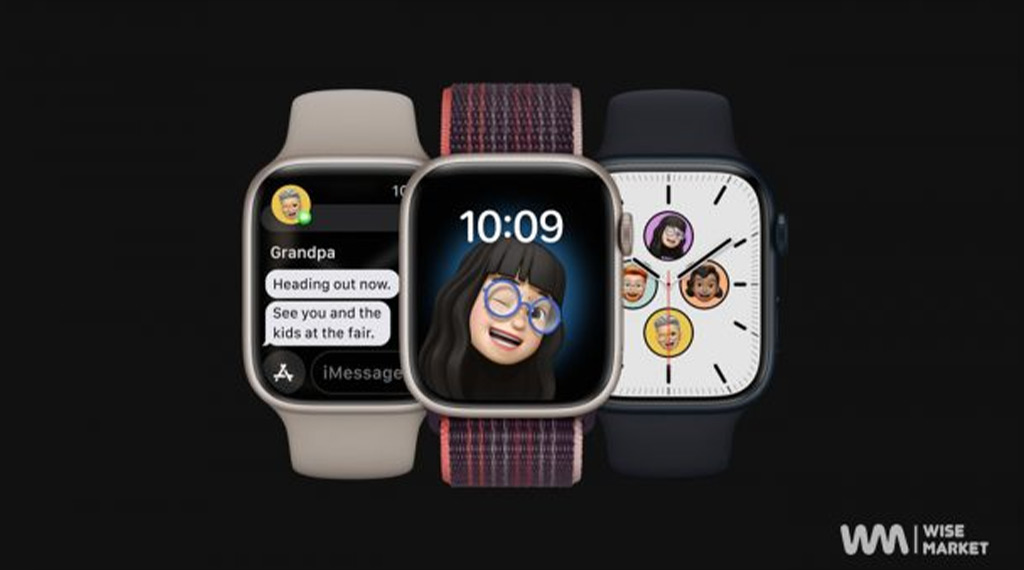The Smart Watch Sensor Scenario
Smart watch have continuously become more technologically advanced with time, and one great benefit that follows is the range of sensors embedded to monitor our health status or general fitness. From detecting heart rates to tracking sleep, activity detection, and many more, sensors are an essential insight into our bodies and daily routines. However, proper application for full-power extraction of the smart watch sensors requires knowledge of how the sensors work and the quantities they measure. Let’s learn more about the sensors and how they are reshaping your life!
Heart rate sensors
Smart watch use photoplethysmography to measure heart rate. They do this by shining green LED lights into the skin and noticing the changes in the absorption of light reflected off the skin, thereby computing the user’s heart rate.
Used for:
Advanced sensors also include the measurement of heart rate variability (HRV), which measures the time taken between consecutive heartbeats. HRV can thus give an account of the user’s general state of health and the stress level under consideration.
Activity Tracking Sensors
Smart watch combine the power of accelerometers and gyroscopes to detect and classify various types of physical activity. Accelerometers measure the forces the device is subjected to, while cameras and gyroscopes measure angular velocity, enabling the watch to support changes in orientation and movements.
Used for:
Analyses of the data from those sensors can lead to accurate steps, distance, and the number of calories burned. Beyond that, smart watches can differentiate various activities, such as walking, running, cycling, and swimming, as machine learning algorithms that have been learned from big datasets of human movement patterns.
Sleep Tracking Sensors
Smart watches combine readings obtained from heart rate, movement, and respiration sensors to trace sleep. Heart rate sensors monitor the changes in heartbeats throughout the night, which can be used to gauge the different phases of sleep. The watch functions actively according to body movements, which allows it to differentiate further between light sleep, deep sleep, and REM sleep.
Used for:
Some smart watch models also include respiratory sensors to detect the breathing rhythm of one’s sleep. By combining and analysing this data, the smart watch gives insight into sleep quality, how much time is spent in what stages of sleep, and how many times you were awake throughout the night.
The GPS and Location Sensors
These GPS data can be used to get an exact measure of the covered distances, pace, and elevation gain in any outdoor activity, such as running, biking, or hiking.
Used for:
Most smart watches can be integrated with mapping and navigation applications, which help access the user’s location and route on a map. Some even go the extra mile to provide turn-by-turn navigation through vibration alerts on your wrist or audio cues.
Environmental Sensors
Smartwatches include sensors able to monitor the surrounding environment a user finds himself in, including barometric pressure sensors and ambient light sensors. Barometric pressure sensors can be used to estimate elevation and track progress in activities like hiking or mountain climbing. Ambient light sensors adjust the screen brightness on the watch automatically to extend battery life and optimise visibility under varying light conditions.
Used for:
Some smartwatches also include UV sensors that trigger the amount of ultraviolet radiation from the sun and health warnings with high amounts. These sensors provide useful tips to the user to prevent radiation from coming into contact with their skin.
Sensors for Skin Temperature
Skin temperature sensors, on the other hand, measure the temperature of the user’s skin and can be used to tell their general body health. Though different from core body temperature measurement, skin temperature can be useful in indications like potential fever or illness.
Used for:
For skin temperature data, merging with other sensors like heart rate and activity sensors provides more context to infer situations about the user’s health and well-being.
Blood Oxygen (SpO2) Sensors
Data determines that it measures changes in light absorption while blood passes through the capillaries to calculate percentages of hemoglobin carrying oxygen. Smartwatches come equipped with SpO2 sensors for monitoring and detecting oxygen saturation in blood.
Used for:
Blood oxygen levels are essential in respiratory health and, therefore, can be helpful for regular high-altitude visitors and persons with respiratory conditions.
Conclusion
In conclusion, we have acquired knowledge of all the types of sensors in modern smart watches and dive into how they work. By learning the principles and applications of these sensors, you shall be in a perfect position to choose a smart watch that is relevant to you, one that will be optimised to realise your maximum potential.
Whether you’re a fitness enthusiast, a health-conscious individual, or just curious about technology, and this guide will give you all the knowledge you need to make decisions. Wise Market Australia has a collection of the best smartwatches in the market. We offer a warranty, a money-back guarantee, and free delivery to all our customers in Australia. So, no need to think twice. Buy now!
FAQs (Frequently Asked Questions)
1. How do heart rate sensors in smart watches work?
The optical heart rate sensors on a smartwatch use photoplethysmography, a technology that flashes green LED light onto the skin. Changes in light absorption are subsequently measured as blood vessels expand and contract with each heartbeat.
2. What’s the difference between accelerometers and gyroscopes in activity tracking?
An accelerometer measures linear acceleration forces, and a gyroscope measures angular velocity. Combined, they help make smart watches capable of detecting and classifying various kinds of movement and different activities.
3. How do smartwatches track sleep patterns?
Smartwatches use fused data from heart rate and movement, and even sometimes respiratory sensors, to detect various sleep stages and give insights into their quality.
4. What is pulse oximetry, and how do smartwatches use it?
Pulse oximetry works by passing light and infrared through the skin to determine the amount of oxygen being carried by the blood. Using that, smartwatches only indicate their assessment of the percentage of oxygen-saturated hemoglobin in the blood.
5. How accurate are skin temperature sensors in smartwatches?
Although slightly less precise than medical-grade thermometers, smartwatch skin temperature sensors can detect relativistic variations of skin temperature that may indicate potential health issues or relative changes in body temperature.










